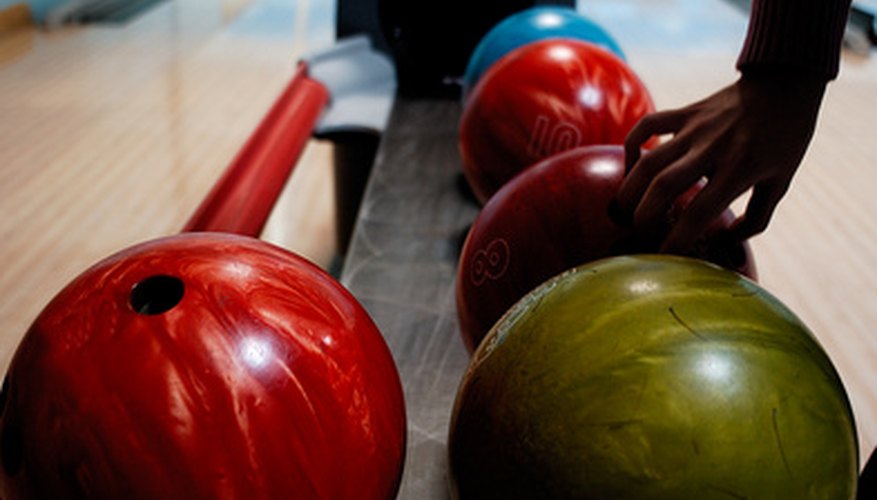Bowling balls can become chipped over many years of use or when passing through the mechanics of the ball return. The chip may not impact the spin of the ball unless it is in the direct spin path of the ball. This can be determined by a lightly oily strip where the ball hits the lane. The chip can be filled in at home with a bowling ball repair kit, a Scotch-Brite pad and professional ball polish.
- Bowling balls can become chipped over many years of use or when passing through the mechanics of the ball return.
- This can be determined by a lightly oily strip where the ball hits the lane.
Apply Master Kwik-Patch clear filler to the chipped area of the bowling ball. Depending on the size of the chip, this step may have varying drying times. Check the packaging for the appropriate time before applying the accelerator.
Spray Kwik-Patch Accelerator to the filled-in chip. It allows the filler to dry quickly and completely. The filled chip will be rough and in need of polishing, but the ball should be usable shortly after applying the accelerator.
- Spray Kwik-Patch Accelerator to the filled-in chip.
- The filled chip will be rough and in need of polishing, but the ball should be usable shortly after applying the accelerator.
Finish the ball with a grey Scotch-Brite pad that can be found at most hardware stores. Gently smooth the surface of the filled-in chip and the entire ball with the pad to give the ball more grip on the lane.
Polish the entire ball. Check the manufacturer's website for the finish of your particular ball. There are varying types of finishes on bowling balls, and the Ebonite polishing solution may interfere with the polish. Manufacturers also sell polish specific to their balls. If you have a Storm ball, only use the manufacturer's polish.
